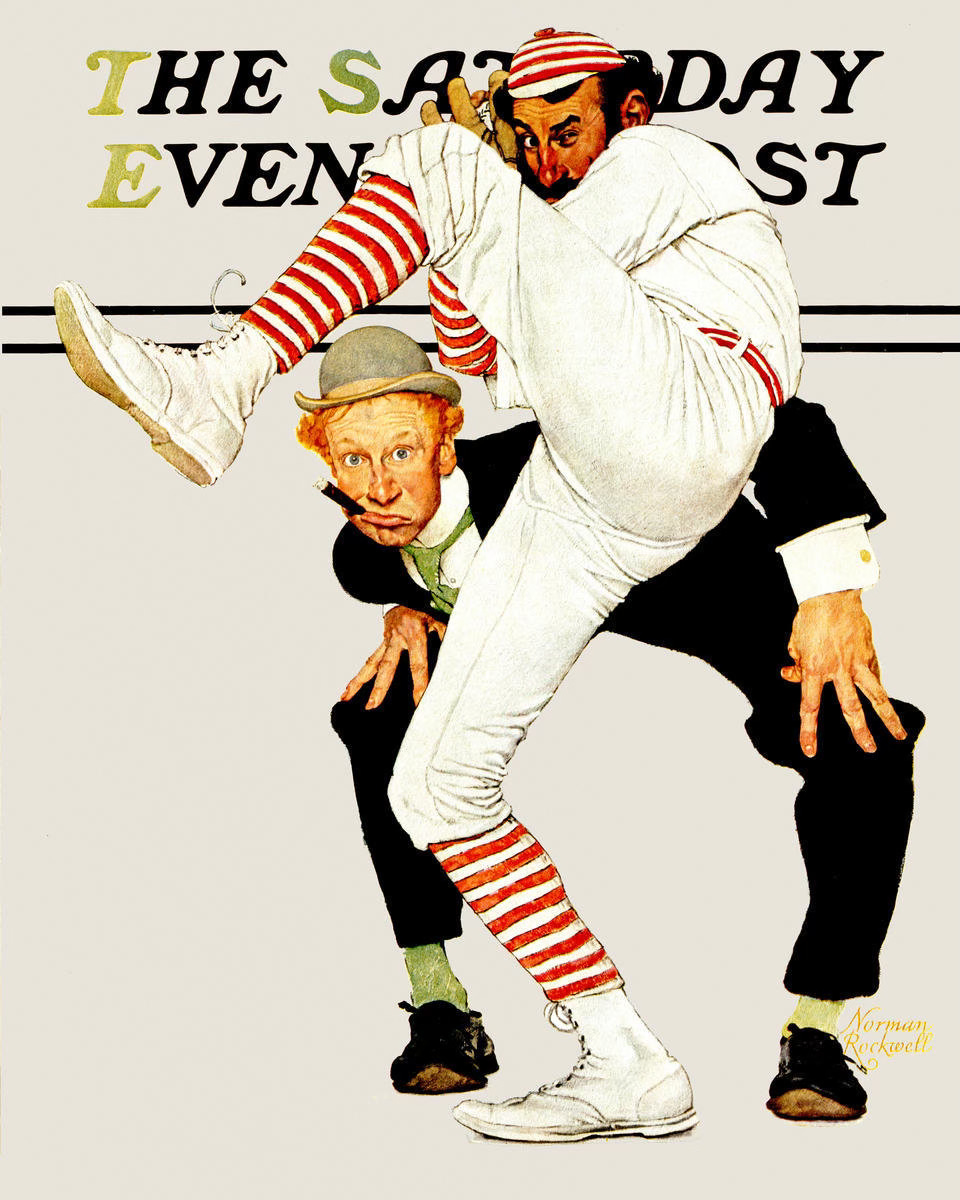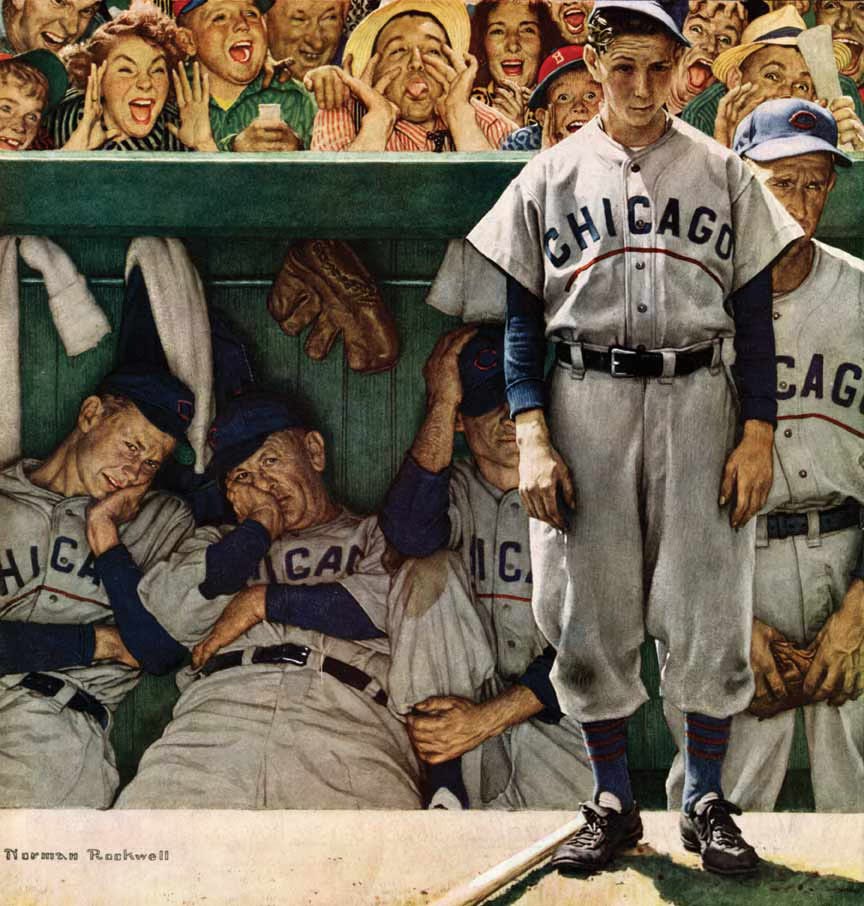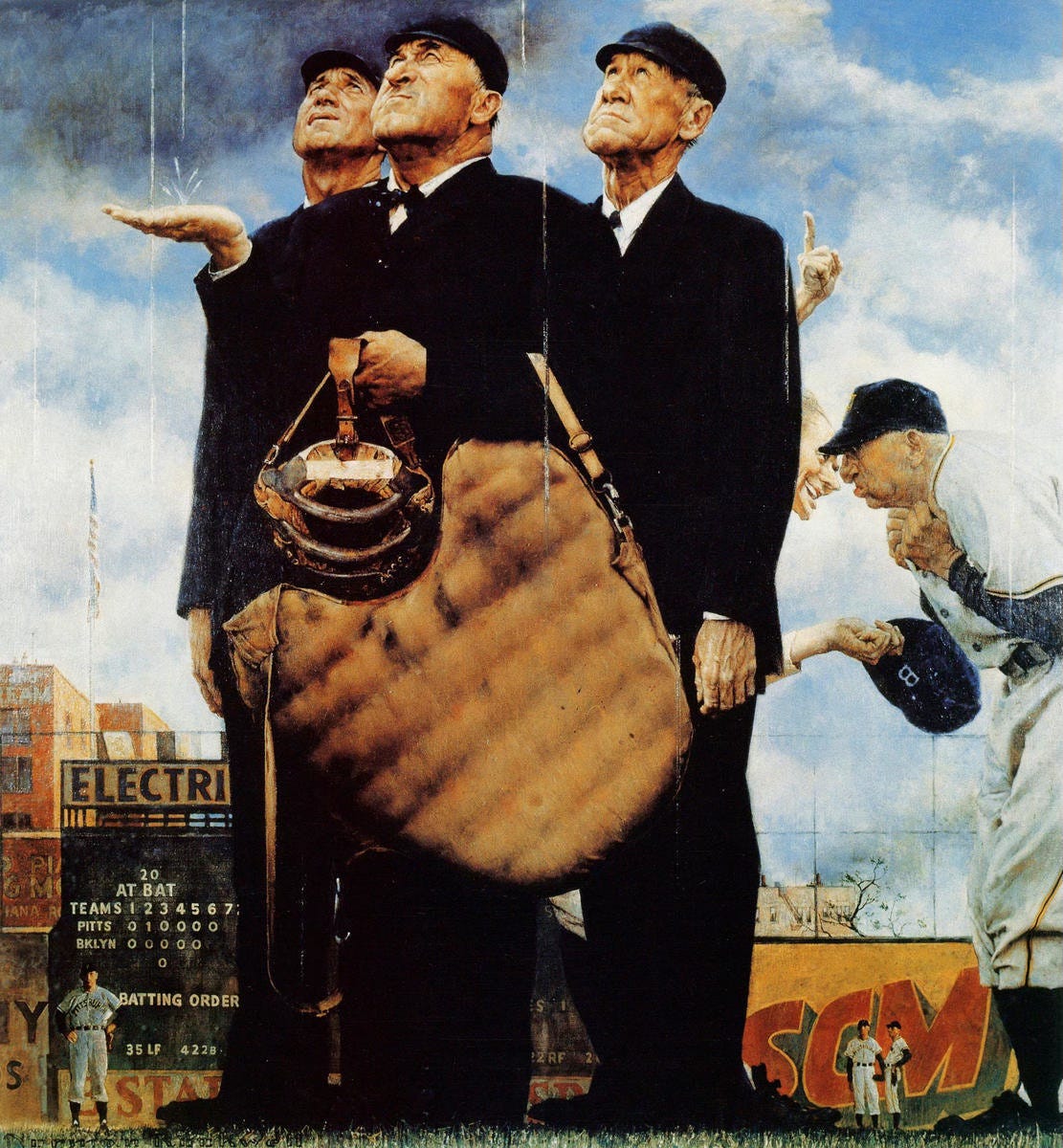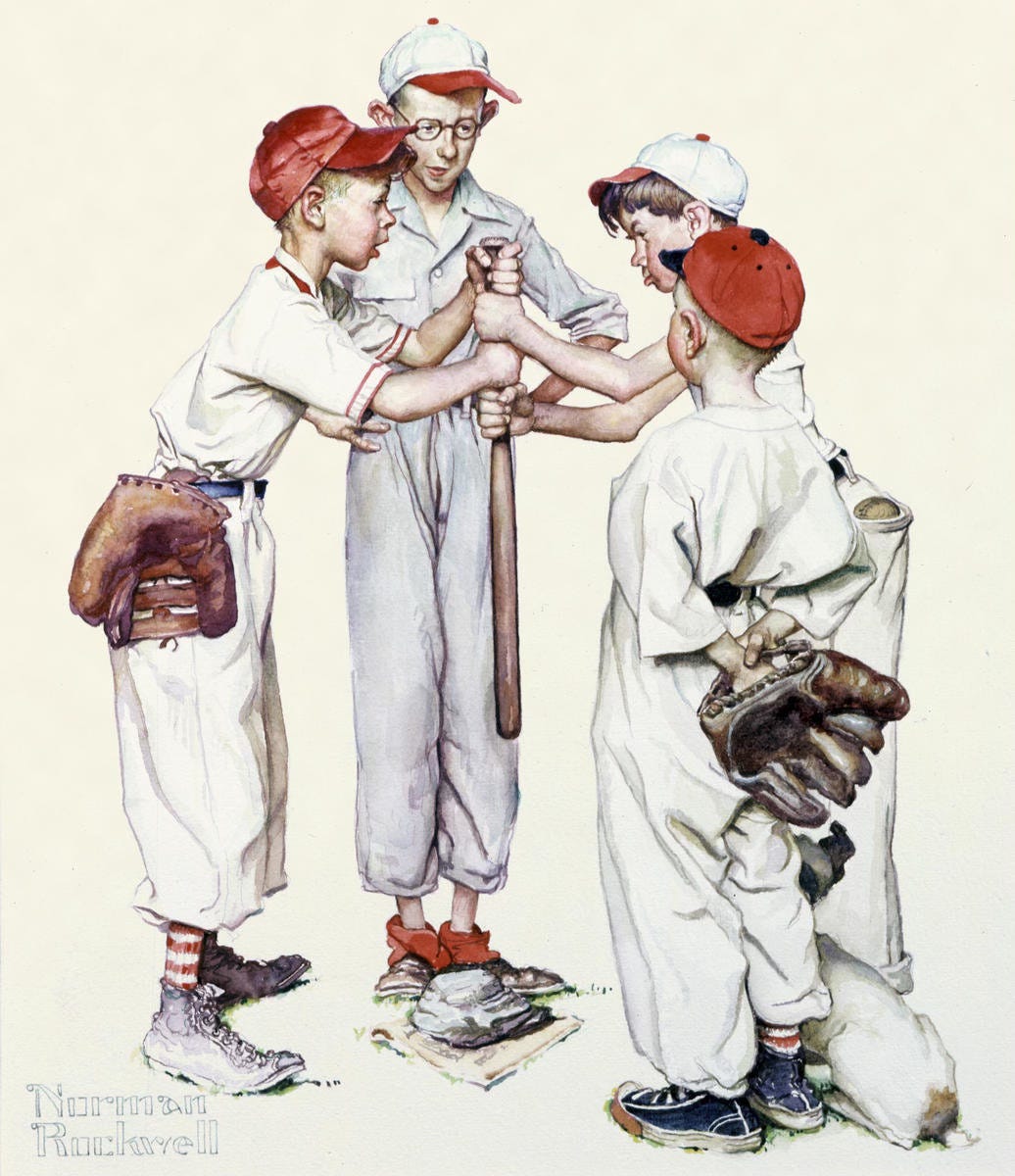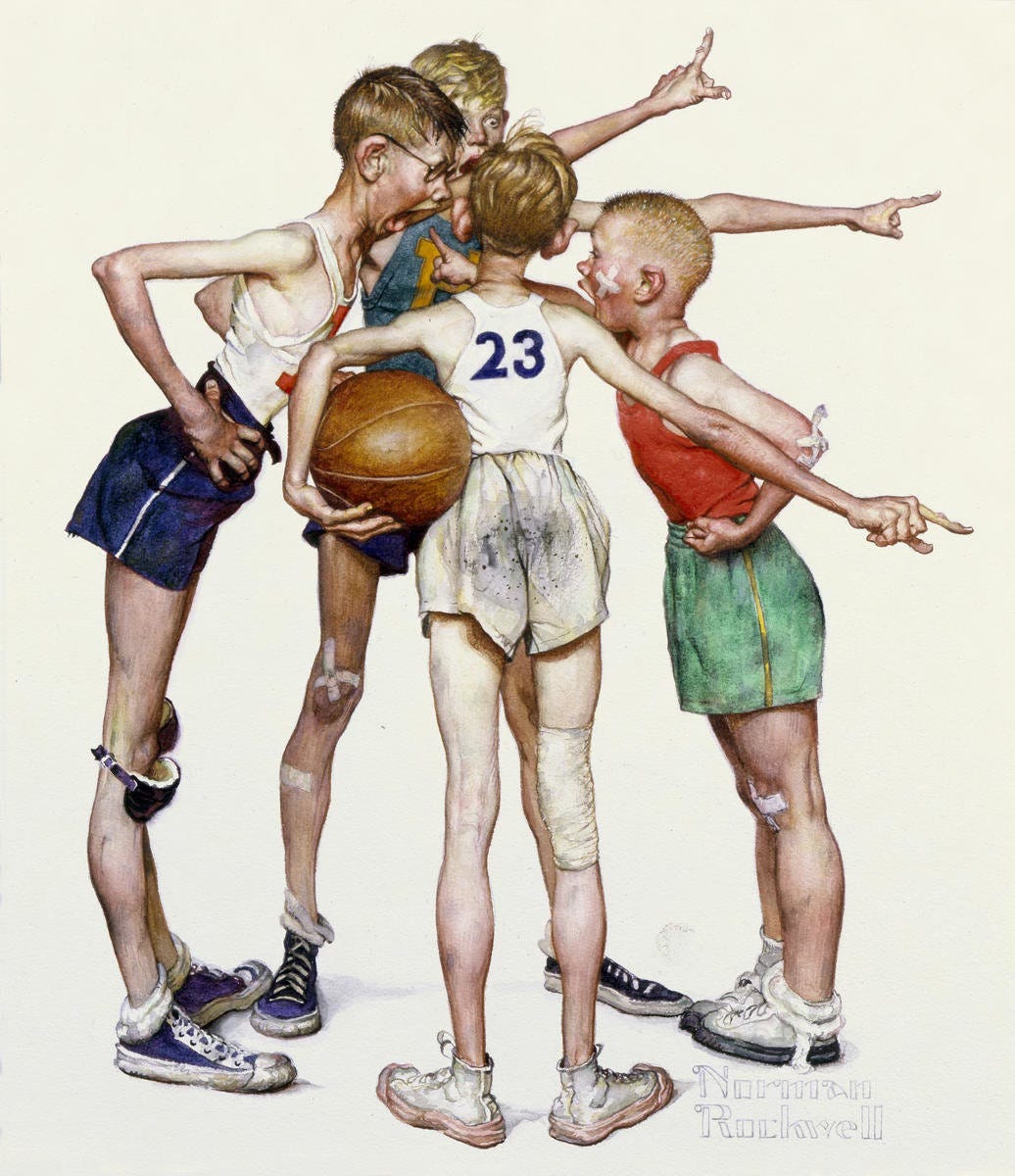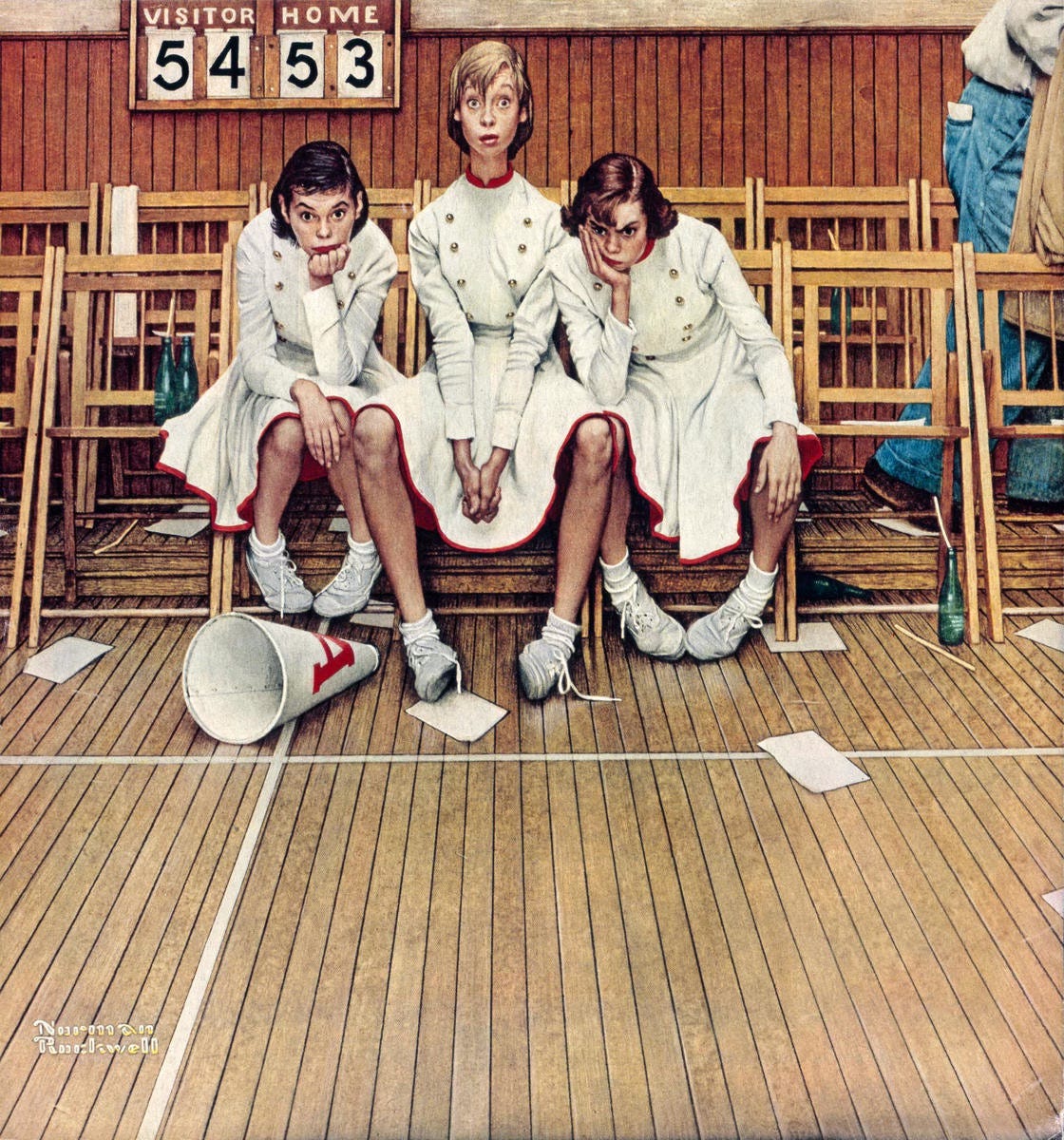Norman Rockwell, America's Sports Artist: Part 1
The famous painter's sports art blended Americana with sports most relatable moments
Today, almost 50 years after his passing in 1978, Norman Rockwell remains one of America’s most beloved artists and perhaps the most popular illustrator of the 20th Century. There are many reasons for this. The sheer breadth of his work - having a career that spanned some 60 years. The quantity and quality of his work - with over 800 cover illustrations for some of the nation’s most popular magazines, including The Saturday Evening Post, LOOK Magazine and Boys’ Life, the magazine of the Boy Scouts of America. But perhaps the biggest reason for his continued popularity is the subject matter of his pieces and the way those subjects were presented.
Norman Rockwell saw his role as not only an artist, but as an entertainer and storyteller. He was so noted at the latter that legendary film directors Steven Spielberg and George Lucas, both collectors of Rockwell’s works, have praised him for his ability to tell a story with a single image. In his artwork, Rockwell presented scenes of American life with a slight sense of humor and humanity that endeared them to the public. Rockwell depicted moments in time with a cinematic style and flair that allowed the viewer to create their own story of before and after Rockwell’s captured image.
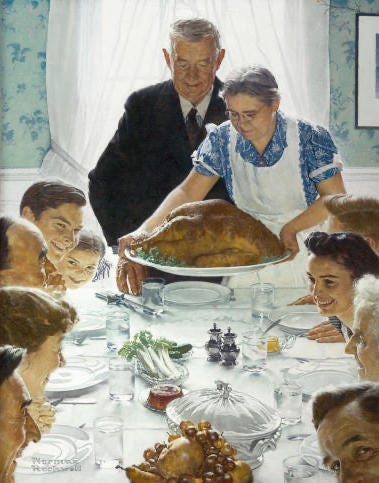
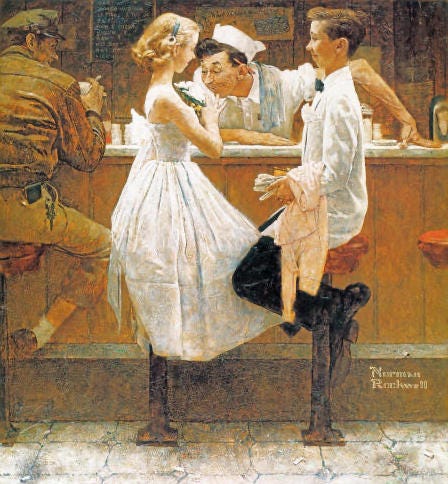

Norman Rockwell Moments
These moments - a grandmother presenting her family with Thanksgiving dinner, a teenage couple at a diner after their prom, a young boy in a doctor’s office awaiting his shot, and so many others, were so popular and relatable to the American public that they became part of the country’s visual identity. Because of their style, and Rockwell’s meticulous execution of his art, these moments have come to be known as “Norman Rockwell Moments”, with no less an authority than UrbanDictionary.com defining it as “Any image of a small town event with archetypal characters that evoke imagery suitable for a Normal Rockwell painting.”
While Rockwell was far from solely a sports artist, he did complete several pieces that feature sports as either a theme or subject matter. As with his other pieces, his sports pieces are less about the subject and more about capturing and telling a story based off a unique moment in time. Atypical to most sports art, Rockwell doesn’t focus on the game’s most popular athletes or memorable moments - as with all of his art, Rockwell shares slice of life moments familiar to fans and players of the sport. Even on the rare occasion when he uses professional athletes as subject matter they are rarely the focus of the painting and mainly serve to help Rockwell portray the moment.
What follows are some of his most popular sports themed pieces.
“Tackled” (1925)
Rockwell’s first football themed cover for The Saturday Evening Post depicts two young gridiron heroes at the point of impact. Although still relatively early in his career, Rockwell had by this time already been at the Post for almost a decade. Already present are some of the techniques that Rockwell would come to be noted for - the overly expressive facial expressions of the subjects, the figures that are realistic with just the slightest hint of caricature, and most of all his immaculate attention to detail, right down to the light and shadow on the leather football helmets. In Rockwell’s hand, all of these techniques combine so that we get a sense of the moment of the tackle.
“The Windup” (1939)
This Post cover from July of 1939 commemorates the 100th Anniversary of baseball. Although later proven untrue, the centennial of 1939 celebrated Abner Doubleday’s invention of baseball in Cooperstown, NY. Rockwell depicts an umpire watching from behind the pitcher in his windup. Whatever historical inaccuracies may exist in Rockwell’s painting (the pitchers glove immediately comes to mind) it is another testament to Rockwell’s ability to tell a story with a single image. Given its date of creation, I wonder if the image may have changed had Rockwell painted it at a later date when the study and research of early baseball were more thorough.
“The Dugout” (1948)
Rockwell went on location to Braves Field, home of the Boston Braves, to complete studies for this Post cover. For those in the dugout he used actual Cubs players along with manager “Jolly Cholly” Charlie Grimm (second from left with his head in his right hand), who Rockwell posed prior to the game. But for the dejected batboy Rockwell relied on his own model, so that he could direct his pose and facial expressions. For the crowd, Rockwell used fans who were early to the game, pointing out to his assistants those he would like to pose. So here, even when using actual famous athletes as subject matter, the point of the work is less about the famous athlete, or even a famous moment in sport, but more about the human reaction to a relatable moment in sport. As an easter egg, a look in the upper left corner reveals Mr. Rockwell himself, something that he often did, especially with crowd scenes, in his later years.
“The Three Umpires” (1949)
This 1949 Post cover (also known as Game Called Because of Rain or Tough Call) pays homage to the people that most baseball fans love to hate, the umpires. Rockwell shows us three umpires gathered together to debate whether or not to call a game on account of rain, as players and managers await the decision (and debate it themselves) in the background. Again, we see classic Rockwell figures with just an ever-so-slight hint of caricature at a moment in the sport that is far from the most dramatic, yet through Rockwell’s expert craftsmanship it is given the sense of emotion and story that allows it to stand on its own.
“Coin Toss” (1950)
Two lanky team captains stand at attention for the referee’s coin toss in this Saturday Evening Post cover from 1950. Another great example of Rockwell’s charm as a storyteller, you can almost feel a chill in the air as athletes and fans alike await the start of this afternoon game. The humanity of the figures, the attention to detail in the uniforms and subtle hints of clothing in the stands, the small town background (complete with perfectly placed church steeple) - all of Rockwell’s signature strengths are on full display here in this slice of mid-century Americana.
“Four Sporting Boys: Baseball [Choosin’ Up]” (1951)
Beginning in 1950 Rockwell painted illustrations for Brown and Bigelow Four Seasons calendars, a role he would continue for the next 16 years. This piece from the 1951 calendar depicts four youngsters in the midst of that time honored tradition of choosing up sides for a sandlot game. While generally not as detailed as his magazine covers, Rockwell never strays from storytelling with his work.
“Four Sporting Boys: Basketball [Oh Yeah]” (1951)
Another illustration from the 1951 calendar, this may be one of Rockwell’s most expressive pieces. The argument over a basketball call takes on the drama of a three-act play in Rockwell’s hands. The body language of the players, the exaggeration of their facial expressions and the details of their clothing (including socks so floppy they would put Pistol Pete Maravich to shame) all combine to let us in on the moment even if we can’t actually hear the yells of their arguing.
“Losing the Game [Cheerleaders]” (1952)
In this February 1952 Saturday Evening Post cover, Rockwell depicts the agony of defeat with just two visual elements - the one-point difference of the scoreboard and the stunned faces of three young cheerleaders. Everything else depicted - the left behind soda bottles, the printed programs scattered on the floor, the empty seats - only serve to further the plot of the story already established by Rockwell with those first two elements.
“The Rookie [Red Sox Locker Room]” (1957)
Perhaps only an artist with the notoriety of Norman Rockwell could paint baseball Hall of Famer Ted Williams and make him a secondary character. For this 1957 Post cover Rockwell used actual Red Sox players, including Frank Sullivan and Jackie Jensen among others (Williams was unavailable to pose but sent photos to be used as reference) but makes the focal point a young rookie, suitcase and glove and bat in hand, eager to impress. The expressions and body language of the Red Sox veterans serve to tell us the story of how the rookie was received.
“The Recruit” (1966)
After leaving the Post, Rockwell began working for LOOK Magazine. This 1966 piece for LOOK accompanied an article on the rise of recruiting in collegiate sports. This piece is one of the great testaments to Rockwell’s attention to detail, from the striping on the socks to the shiny reflection of the cleats to the twill of the embroidered “W” on the coach’s jacket. But again, all of this only serves to further the story of that one depicted moment of the coach conferring with his star recruit.
As we’ve seen, Norman Rockwell used a variety of artistic tools and techniques to present idealized moments, human moments, inherent in sports - relatable to both athlete and fan alike. But how he ultimately created those moments will be the focus of part 2 of this article - including the one time he did make a famous athlete the focus of one of his pieces.
A version of this article previously appeared on Uni Watch. Thanks to UW Editor Phil Hecken for allowing me to republish it here in a slightly different form.






